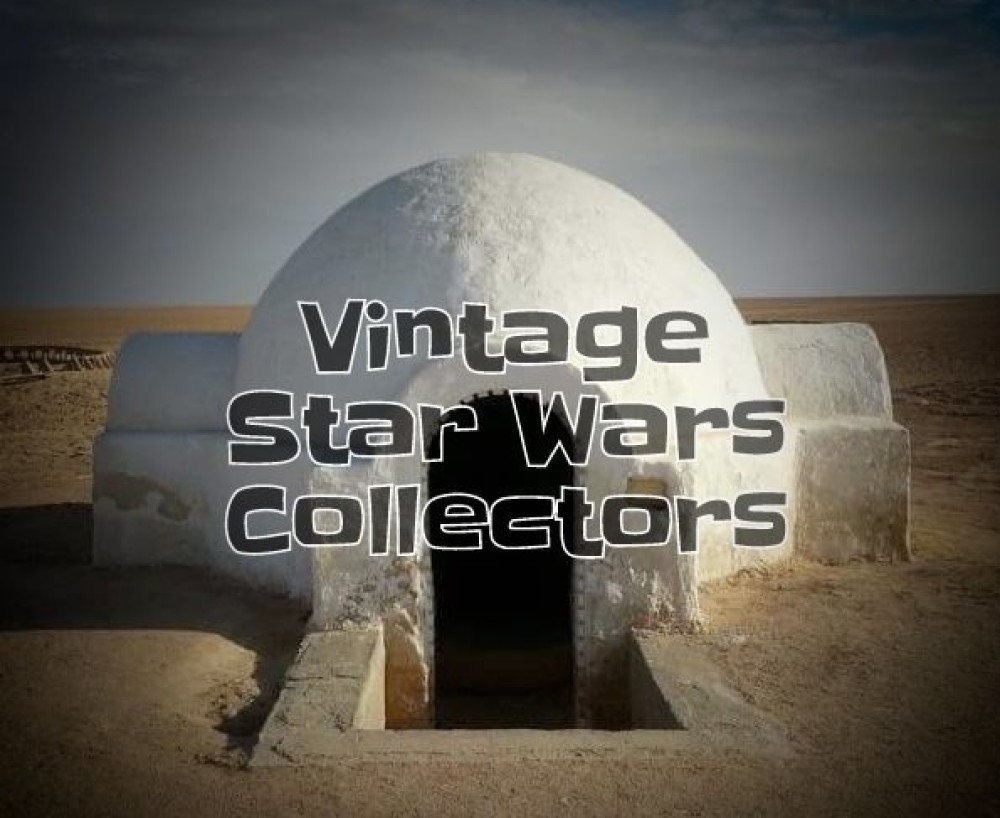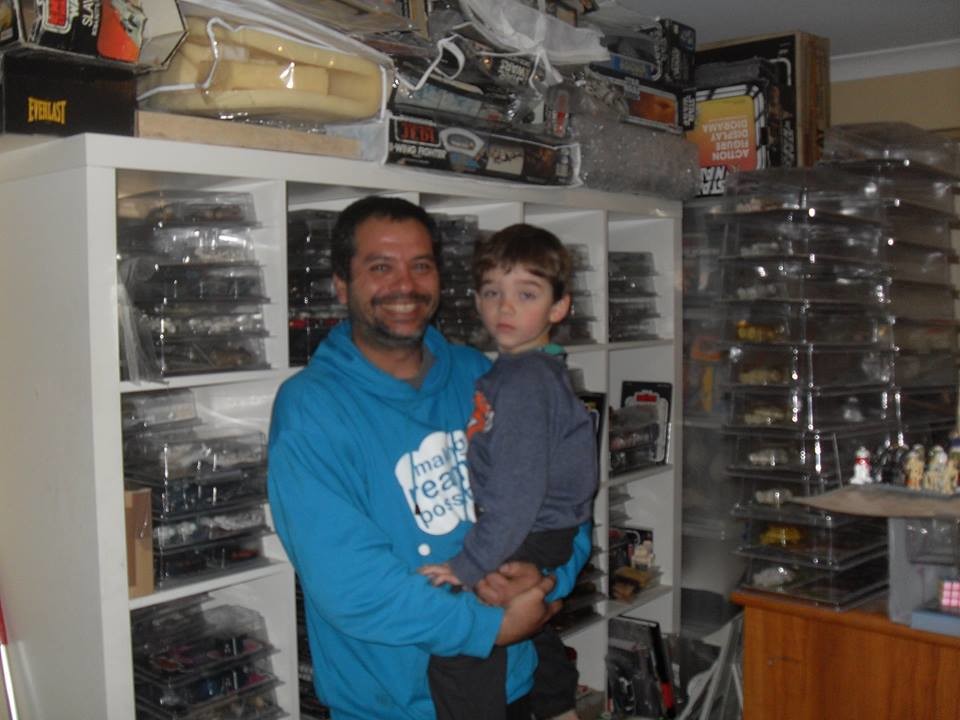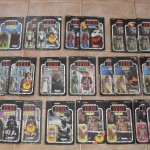Hi guys,
I’m very happy to present another guest collector onto the blog, fellow Aussie James Kenneison – known as ‘Aussie James’ on the boards and a popular moderator on the TIG forum (The Imperial Gunnery Forum) and of the Facebook groups Australian Star Wars Collectors. Vintage only (18+), which he admins alongside Josh Akerman, Nick Johnston and myself, and the Toltoys Collector 18+ group.
Our last guest collector (http://vintagestarwarscollectors.com/guest-collector-ian-cowley-the-hazards-of-reproductions-on-vintage-collecting/) was a roaring success and am pretty sure this will also be a popular article; albeit a much shorter one. James is an extremely well liked collector and is an absolute bottomless well of knowledge, which he is always happy to share with others. While he is friendly (but not always!) and helpful, he is also not the type of guy you’d mess with and is quick to shut down trouble makers. He does though admit that he can be pretty blunt with people sometimes. Thanks to James for taking his time to write the below as it really is a pertinent topic.
Here he is with his beautiful boy:
And some of his awesome collection!
James’ article is pretty brief and I recruited his assistance as a response to the endless arguments that modern Star Wars toys should be considered ‘vintage’ because some of them are almost 20 years old (such as the POTF2 line which Hasbro released in 1995). Not only this, but modern toys are often described as ‘vintage’ in eBay sales. I think it’s important to clarify the definition of vintage in SW collecting, not only to educate newer collectors but also to allow buyers to not to mistakenly purchase a modern toy.
This is what James had to say.
How do we define ‘vintage’?
There seems to be some confusion about what ‘vintage star wars’ means. It is a term that has been adopted by the Star Wars community & ‘vintage’ is NOT to be confused with any definition of the word that you may normally find. It has nothing to do with wine, it is not an age, rather in Star Wars term, it refers to the toys that were made between 1977-1985. Some of these toys include figures, playsets vehicles, and accessories.
These are fairy lights:
They are not light bulbs stuck up a mythical winged creature’s butt and there is no point arguing about it, the same way we cannot argue that vintage Star Wars does not refer to collectable toys pre 1985.
There are though some foreign SW toy lines that were produced a little bit after this time but are still considered vintage. such as the Brazilian Glasslite line.
The above definition of vintage will never change and POTF2 will never be vintage, no matter how old they become. Don’t debate which bounty hunter is 4LOM vs Zuckuss, how to break an egg or whether modern will be vintage…





A perennial topic in the hobby! As James himself suggests, though, I think the marking lines are blurrier than outlined here. The bottom line for me is that collectors should each be able to set their own parameters for what is “complete” (a topic I’ve been thinking about for a long time), so if someone says 1977-1985 is their limit, that’s great! Some people set other limits, such as only the first year of items released, or only items related to a certain character. Those different priorities make the hobby interesting.
The post here, though, seems to be about defining a term, vintage. Especially with action figures, as POTF2 hits the 20-year mark, it’s useful to clarify what general usage of that term means within our hobby. But the hobby is broader than just action figures, and even with action figures 1985 doesn’t provide the clear line implied by this post.
As James notes, what about Glasslite and Top Toys pieces produced in the 80s, sub-licensed under the original Kenner license? Or even with Kenner, 1985 only covers the produced series of Droids and Ewoks figures. Half the Droids figures and Ewoks figures lines are not vintage? Beyond action figures, much of the original Droids and Ewoks items didn’t get produced until 1986 or later, but was continuous with the original releases of those series in other countries. The final issues of the original Star Wars fan club were in 1986. Does that make the issues through 1985 vintage, but those in 1986 modern? What about Star Tours and West End Games items from 1987? Shoot, even the Blackthorne 3D comics? Those were only four years after ROTJ, and to me they represent a direct attempt to maintain the Star Wars license from the original movie era.
For myself, 1990 represents a clearer dividing line for vintage and modern (or at least creating an ending point for the “vintage” era). It’s still not perfect. As with some of my examples above, Star Tours and West End Games are examples of licenses/product lines that extend across both periods. By 1990, though, these were pretty isolated. The original Star Wars wave had fairly well petered out by 1989. People liked the movies, and there was definitely an active hobby, but relatively small. When I would go to comic book stores and ask for original Kenner toys, owners practically scoffed. That stuff is dead.
Until 1991. Heir to the Empire and Dark Empire are generally attributed to re-booting the interest in Star Wars. It was slow to start, but really ramped up every year. The local comic store in Eugene, OR, where I went to college started selling old Kenner toys in 1993, four years after they found it odd that I was interested in them. For me, though, using 1990 (or 1989) as a marking line between the “vintage” era and the “non-vintage” era is the continuity in the marketplace to which things were being sold. I was there buying that whole time, and although I did see those as being “new” items, they were still part of the original Star Wars phenomenon and an effort to sustain. Heir to the Empire and Dark Empire re-introduced Star Wars at a larger stage, and at a point when those original generation fans were ready to take it up.
Wow, this got really long. Some things catch my interest, though, and social media has really quickly shaped some prevailing attitudes in the hobby recently. I like seeing that interaction. But before we got caught up in another crusade that tries to set militant parameters that anything past 1985 is not vintage, I wanted to offer a different perspective.
Thanks Todd Chamberlain! What a thoughtful and intelligent comment! It’s hard to disagree with most of what you say, except to say this. The cutoff point for vintage SW (I think he had figures, playsets and vehicles in mind but I get your point about all the other collectibles), is definitely a murky and extremely vague area and it can be argued that it should extend past the cutoff point that James argues. However the goal of the article was to highlight that the term ‘vintage’, as used in SW collecting, is a period of dates (i.e. 1977-1985) rather than it referring to a period of elapsed time (i.e. 20 years). Whether or not someone wants to extend that by a few years, even to 1990 as you suggest, I myself am not “militant” about – as long as it’s understood that 20 years does not make a SW collectible ‘vintage’ and that POTF2 wlll never be vintage! This isn’t just intellectual masturbation either. I think a general agreement of what ‘vintage’ means also has pragmatic effects and if everyone just decides themselves what vintage means then there will be a lot of confusion (there already is), especially when it comes to buying and selling. How many times have we seen POTF2 items listed on eBAY as ‘vintage’? But of course James, and myself, don’t actually believe that we has the power to set the definition of vintage, it’s just one side of the argument.